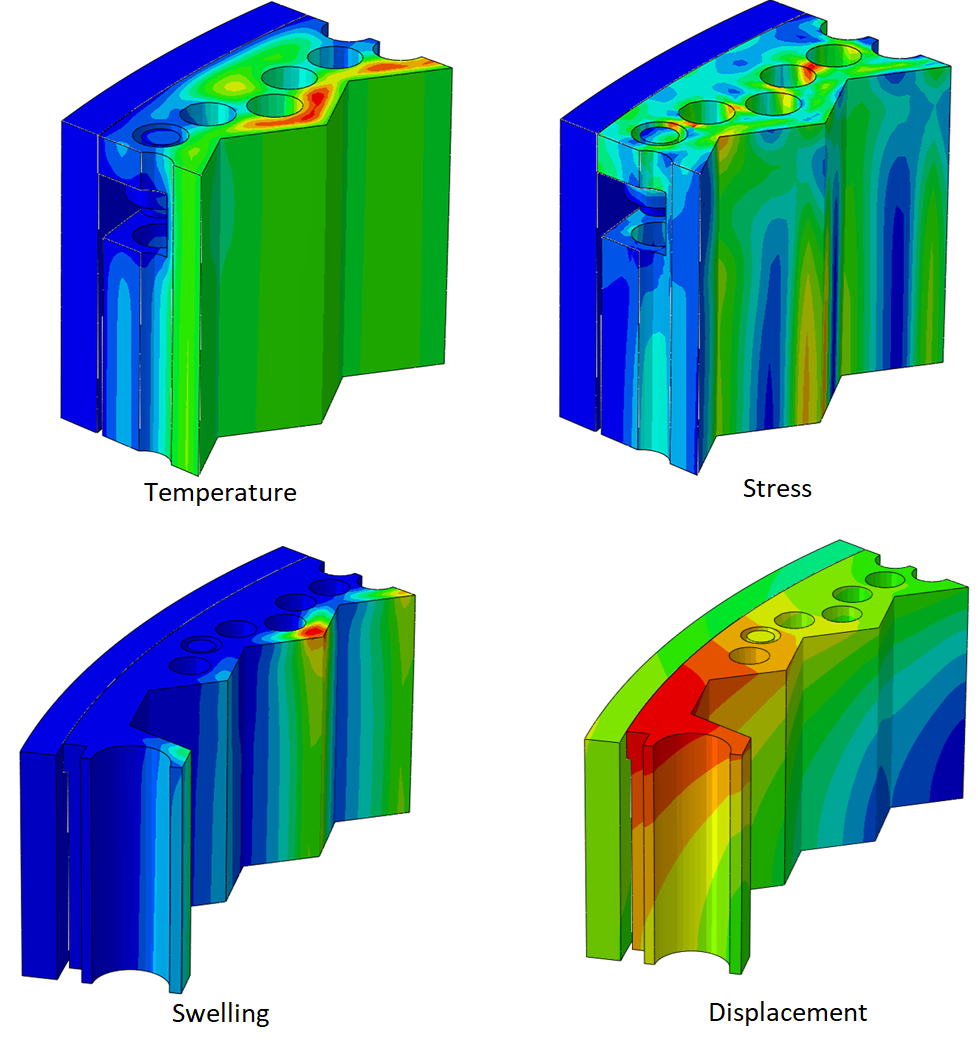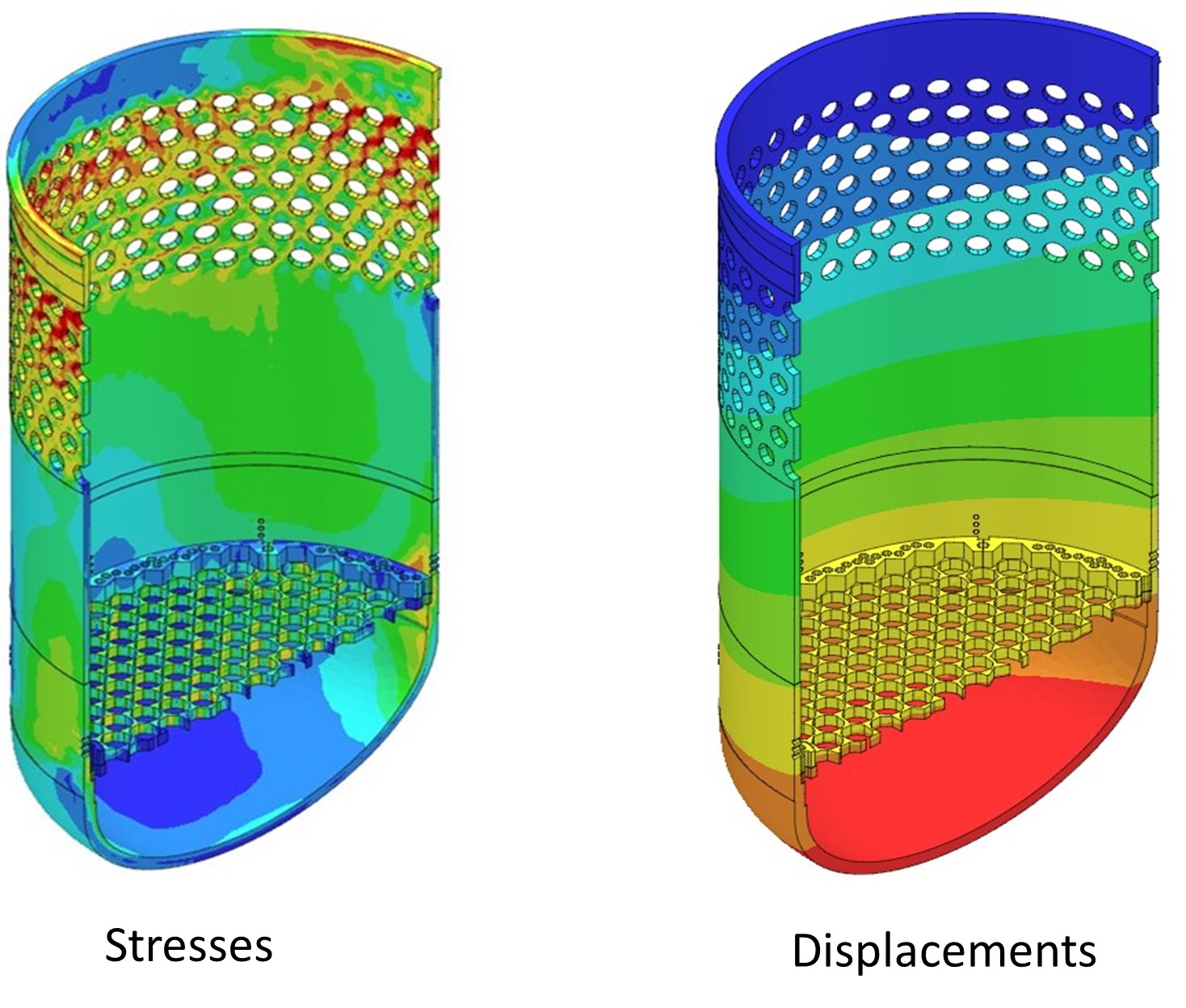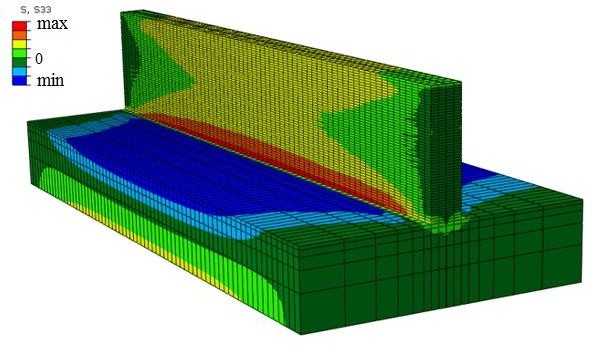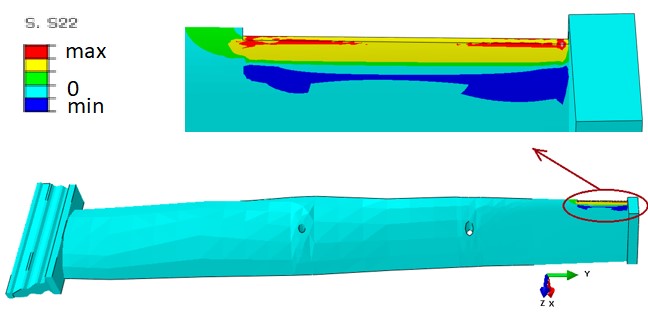FEA & Structural Analysis
What we do
In the ever-evolving world of engineering, precision and efficiency stand as the cornerstones of innovation. In recent years Finite Element Analysis (FEA) emerged as a pivotal tool, reshaping how structures and systems are conceptualized and refined. This numerical technique, rooted in mathematical principles, has become an indispensable asset across diverse industries, providing engineers with a virtual tool for in-depth simulations and analyses.
Reactor Durability Analysis

Analysis of the wall of the reactor allowed to predict expected service life and durability as function of different operating parameters.
Reactor Stress Analysis
Analysis of the reactor allowed to predict stresses and displacements and recommend needed modifications

Model of the Additive Manufacturing Process

Calculation of residual stresses, displacements and deformations after finish of layers formation and full cooling of a sample created by additive manufacturing process.
Turbine Blade Analysis

Created finite element model and calculated turbine blade’s residual stress, deformation and displacement after reconstructive repair of the deterioration zone.
Advantages of Finite Element Analysis:
- Precision and Accuracy: FEA enables engineers to predict structural responses with remarkable precision, identifying potential weaknesses and areas for improvement
- Cost and Time Efficiency: By virtually simulating and testing designs, FEA reduces the need for expensive and time-consuming physical prototypes, streamlining the design process
- Complexity Management: FEA excels in handling complex geometries and materials, providing comprehensive insights into the performance of sophisticated systems and components
- Optimization: Engineers can iterate designs rapidly, experimenting with different configurations to optimize performance and meet design criteria
At its core, Finite Element Analysis involves dividing complex structures or systems into finite elements, each representing a small portion of the whole. Mathematical equations, often derived from fundamental principles like stress, strain, and equilibrium, are then applied to model the behavior of these elements. Through computational algorithms and iterative processes, FEA solutions reveal how the entire structure responds to forces, thermal conditions, and other external factors.
In structural engineering, FEA predicts how complex structures endure loads and stresses. The application of FEA for structural analysis enables engineers to model and assess the behavior of complex structures under various conditions, contributing to the optimization of designs and the identification of potential weak points.
